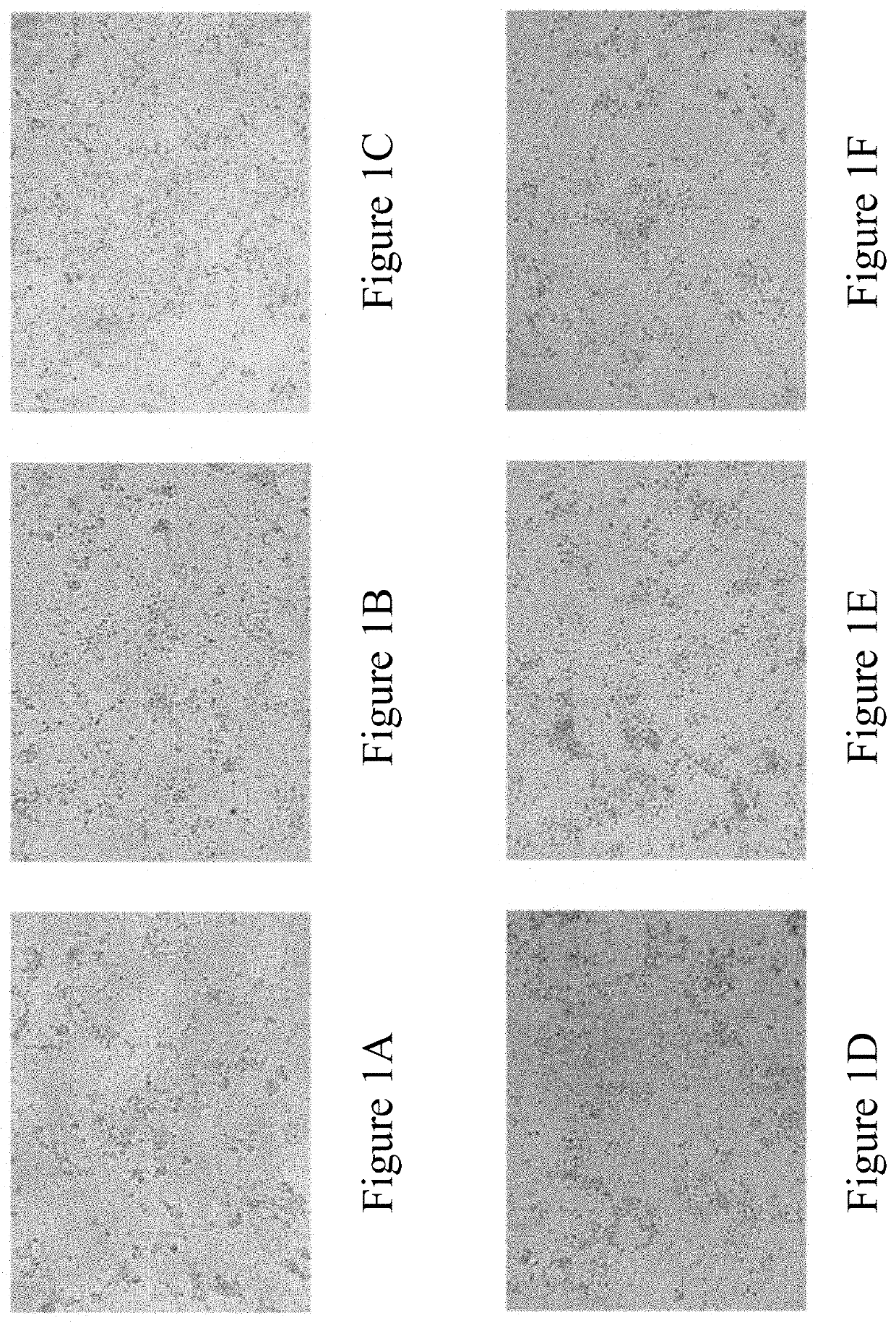Method for treating and/or preventing alzheimer's disease
a technology for alzheimer's and a family member, applied in the field of treatment and/or preventing alzheimer's disease, can solve the problems of increasing oxidative stress and neurotoxicity, damage and necrosis of brain nerve cells, and the cost of medical care for alzheimer's disease is about 800 billion u.s. dollars, so as to improve memory deficits and/or learning impairments of subjects, and reduce the concentration of -amyloid peptid
- Summary
- Abstract
- Description
- Claims
- Application Information
AI Technical Summary
Benefits of technology
Problems solved by technology
Method used
Image
Examples
example
Example 1
Preparation of Neurons Derived from Induced Pluripotent Stem Cells of Patients with Down Syndrome (DS-Neurons)
[0045]1. Cell Culture of Induced Pluripotent Stem Cells of Patients with Down Syndrome (DS-iPSCs)
[0046]DS-iPSCs (provided by Dr. Honglin Su, Department of Life Sciences, National Chung Hsing University, Taichung, Taiwan) were cultured in a serum-free medium, Essential 8™ (Life Technology, USA) and subjected to attachment culture with Matrigel™ (Becton-Dickinson, USA). Then, the culture medium was removed, and the cells were washed twice with Dulbecco's phosphate-buffered saline (DPBS, Corning, Cat. no. 21-031-CV, USA). After that, Accutase™ (Merck Millipore, USA) was added to the cells and reacted with the cells at 37° C. for 2 to 5 minutes, and then the medium was added to stop the reaction. The cells were washed, dispersed, and centrifuged at 1,000 rpm for 2 minutes to remove the supernatant. The cells were then subcultured on a culture plate containing fresh seru...
example 2
Preparation of Mitochondria
[0053]The mitochondria of this Example were isolated and purified from human adipose-derived stem cells (ADSCs). Human adipose-derived stem cells were cultured to 1×108 cells, rinsed with DPBS, and reacted with Accutase™ (Merck Millipore, USA) at 37° C. for 2 to 5 minutes. Then, the culture solution was added to stop the reaction, and the cells were washed, dispersed, and centrifuged at 1,000 rpm for about 2 minutes to remove the supernatant. The cells were resuspended with 2 ml of SHE buffer [0.25 M sucrose, 0.5 mM ethylene glycol tetraacetic acid (EGTA), 3 mM N-(2-hydroxyethyl) piperazine-N′-ethanesulfonic acid (HEPES), pH 7.2; all were purchased from Sigma-Aldrich] and then homogenized on ice 15 times with a homogenizer. After that, the cells were centrifuged at 1,000×g for 15 minutes, and the supernatant was transferred to another tube and centrifuged at 9,000×g for 10 minutes. Then, the supernatant was removed, and the pellet (mitochondria) was resusp...
example 3
Cell Experiments
[0054]1. Cell Treatment
[0055]The DS-Neurons obtained in Example 1 were seeded into a 24-well cell culture plate at a density of 2×105 cells / well and cultured in Neurobasal™ medium containing 2% (v / v) B-27™ supplement for 16 to 24 hours. The mitochondria obtained in Example 2 were added to the culture medium at a concentration of 15 μg / ml or 40 μg / ml per well, and then the plate was centrifuged at 1,500×g at 4° C. for 15 minutes to keep the mitochondria at the bottom of the plate. The DS-Neurons were co-cultured with the mitochondria in a 37° C. incubator for 24 or 48 hours. After that, cell morphology was observed under a microscope, and the culture medium in each well was collected. The collected cell culture was then centrifuged at 1,000 rpm for 5 minutes, and the supernatant was stored at −80° C. for further analysis.
[0056]2. Enzyme-Linked Immunoadsorbent Assay (ELISA)
[0057]The expression levels of Aβ40and Aβ42 of the DS-Neurons were analyzed by ELISA. LEGEND MAX™...
PUM
 Login to View More
Login to View More Abstract
Description
Claims
Application Information
 Login to View More
Login to View More - R&D
- Intellectual Property
- Life Sciences
- Materials
- Tech Scout
- Unparalleled Data Quality
- Higher Quality Content
- 60% Fewer Hallucinations
Browse by: Latest US Patents, China's latest patents, Technical Efficacy Thesaurus, Application Domain, Technology Topic, Popular Technical Reports.
© 2025 PatSnap. All rights reserved.Legal|Privacy policy|Modern Slavery Act Transparency Statement|Sitemap|About US| Contact US: help@patsnap.com



